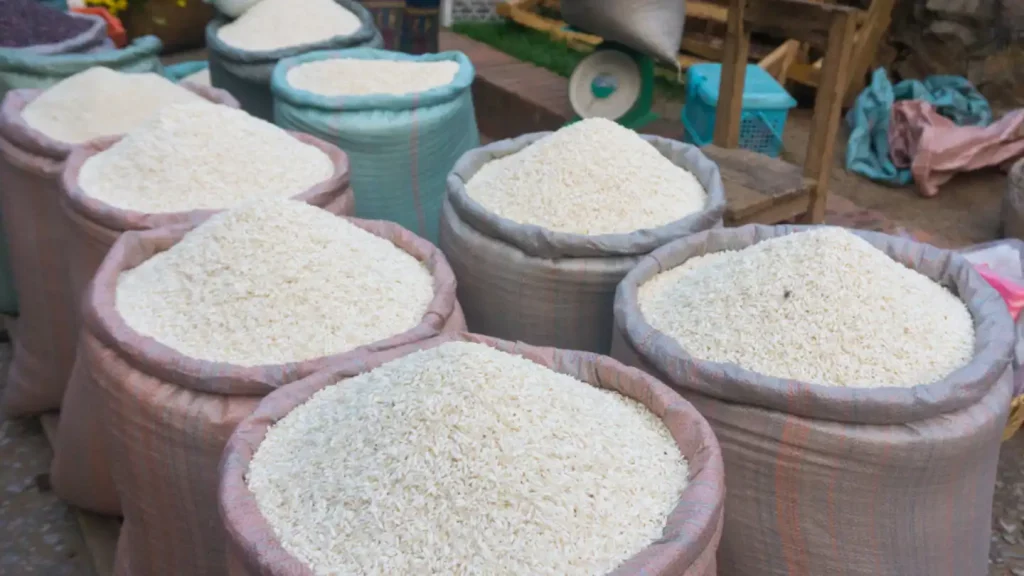Indians are now paying an extra 11.5% for rice than in 2022, according to the Ministry of Consumer Affairs, Food, and Public Distribution
India’s abrupt ban on rice exports has caused global prices to soar as fears of a global food shortage mount. The measure, announced on July 20, bans all exports of non-basmati and non-parboiled rice by the world’s largest exporter. The government said that the export ban was “to ensure adequate availability of non-basmati white rice in the Indian market and to allay the rise in prices in the domestic market”.
Seeking to lower domestic prices at a time when war and climate change have disrupted global supplies, the ban highlights the growing global insecurity over food supplies. International sales of Indian rice soared by 35% in the year till June, causing a 3% bump in local prices just in the last month. Indians are now paying an extra 11.5% for rice than in 2022, according to the Ministry of Consumer Affairs, Food and Public Distribution.
Immediate International Ripples
The announcement immediately pushed up the international price of rice, with traders expecting prices to rise even more substantially over the coming weeks. The move has also caused instances of hoarding, as Indians in the USA and other places are reported to be stocking up on bags of rice in anticipation of a shortage of the staple. The reported price of a 9kg bag of rice is now $47, up from $15 before the export ban. Prices are now at decade highs, as a decreased supply meets increased demand due to the disruption of wheat. Rice inflation has sharply risen from 6% last year to 12% in June 2023.
The major markets for exported Indian rice are Bangladesh, China, Nepal, and several African countries. India is the world’s largest rice exporter, accounting for more than 40% of the global rice trade. While the ban does not apply to high-grade basmati rice, other grades are subject to it. Traders have turned to Thailand and Vietnam, the second and third largest exporters, to fill the gap, though prices in these countries, too, are hitting highs.
The move is political in nature, as the country has been struggling with high food inflation in recent months, particularly in vegetables, fruit, and grains. As the country heads to a contentious election next year, keeping food inflation low will be a priority for the incumbent Indian government. Though India is faring much better than other countries in the South Asian region, prices of food have still been volatile recently, inflating 5% at times, prompting a slew of stabilisation measures. These include the current rice export ban, as well as previous measures, such as a 20% export duty imposed last September.
The fear of a global food shortage is increasing
Global food supply chains have been pushed to their limit in the aftermath of Russia’s invasion of Ukraine, as the two countries are some of the largest food exporters on the planet. More recently, the termination of the Black Sea grain trade deal by Russia, and the destruction of a critical dam, have sent global prices of wheat and corn skyrocketing. Though the USA has pledged a quarter of a billion dollars to expand other avenues for Ukrainian grain exports, the infrastructure is not sufficient, and large parts of the Ukrainian harvest are likely to go to waste.
The global food shortage has been further exacerbated by erratic weather patterns, which have lowered crop productivity and disrupted water supplies. Major US farm zones have been hit by unusually hot weather and lack of rain, leading to stocks falling to a 16-year low. Similarly, Europe too has been struggling with a hellish heat wave, and the Indian ban was partially precipitated by erratic rains, which arrived late and hard, disrupting crop planting. Harvests in China, too, have been disrupted by unusual weather patterns. This has raised fears of a global food shortage, as the number of people dealing with food insecurity rose sharply last year.
The UN estimated that more than 350 million people struggled to feed themselves last year, and the number will likely go up further this year. The situation is particularly dire for countries dependent on food imports like Egypt and China. Not just direct food imports but also the ability of many countries to grow their own food has been affected, as Russia is also a major supplier of fertilisers. Concerted and determined international action is needed to stave off famine and ensure food security for the developing world.
